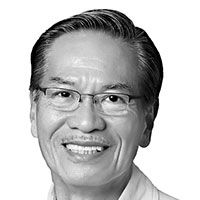Today in the Past
December 6, 2005 | 12:00am
Today, December 6, 1898, Sandico telegraphs Aguinaldo as follows: "The difficulty last night with the American troops at the San Juan picket has been adjusted without harm. Our preparations ought to continue, pending orders."
With Aguinaldo's return from self-exile, there were now four major forces on the historical stage: Spanish colonialism, American imperialism, the Filipino ilustrados, and the Filipino masses.
The first three engaged in a series of interrelated maneuvers in furtherance of their own goals, which centered on securing control over the fourth entity - the masses.
Spanish colonialism was trying to avert its impeding demise with conciliatory moves.
American imperialism was playing for time until it had accumulated enough military strength before showing its hand.
The Filipino ilustrados were concerned with strengthening their claim to leadership by reasserting control over the Revolution so as to assure their preeminent position in any political set-up that would emerge.
Their maximum and public goal was independence, but long before they began to fight the Americans they were already considering the possibility of accepting a protectorate or even annexation just as they had been disposed to accept the continuation of Spanish rule after the Pact of Biak-na-Bato.
In his instructions to Teodoro Sandico who had been charged with the task of organizing a Revolutionary committee abroad, Aguinaldo characterized the policy of his government in these words.
"To struggle for the independence of the Philippines' as far as our strength and our means will permit - protection or annexation will be acceptable only when it can be clearly seen that the recognition of our independence, either by force of arms or diplomacy, is possible."
With Aguinaldo's return from self-exile, there were now four major forces on the historical stage: Spanish colonialism, American imperialism, the Filipino ilustrados, and the Filipino masses.
The first three engaged in a series of interrelated maneuvers in furtherance of their own goals, which centered on securing control over the fourth entity - the masses.
Spanish colonialism was trying to avert its impeding demise with conciliatory moves.
American imperialism was playing for time until it had accumulated enough military strength before showing its hand.
The Filipino ilustrados were concerned with strengthening their claim to leadership by reasserting control over the Revolution so as to assure their preeminent position in any political set-up that would emerge.
Their maximum and public goal was independence, but long before they began to fight the Americans they were already considering the possibility of accepting a protectorate or even annexation just as they had been disposed to accept the continuation of Spanish rule after the Pact of Biak-na-Bato.
In his instructions to Teodoro Sandico who had been charged with the task of organizing a Revolutionary committee abroad, Aguinaldo characterized the policy of his government in these words.
"To struggle for the independence of the Philippines' as far as our strength and our means will permit - protection or annexation will be acceptable only when it can be clearly seen that the recognition of our independence, either by force of arms or diplomacy, is possible."
BrandSpace Articles
<
>
- Latest
- Trending
Trending
Latest
Trending

By DIPLOMATIC POUCH | By Marie Fontanel | 14 hours ago

By BABE’S EYE VIEW FROM WASHINGTON D.C. | By Ambassador B. Romualdez | 14 hours ago
Latest

By The broader view | By Harry Roque | 1 day ago

By AT GROUND LEVEL | By Satur C. Ocampo | 1 day ago
Recommended

























